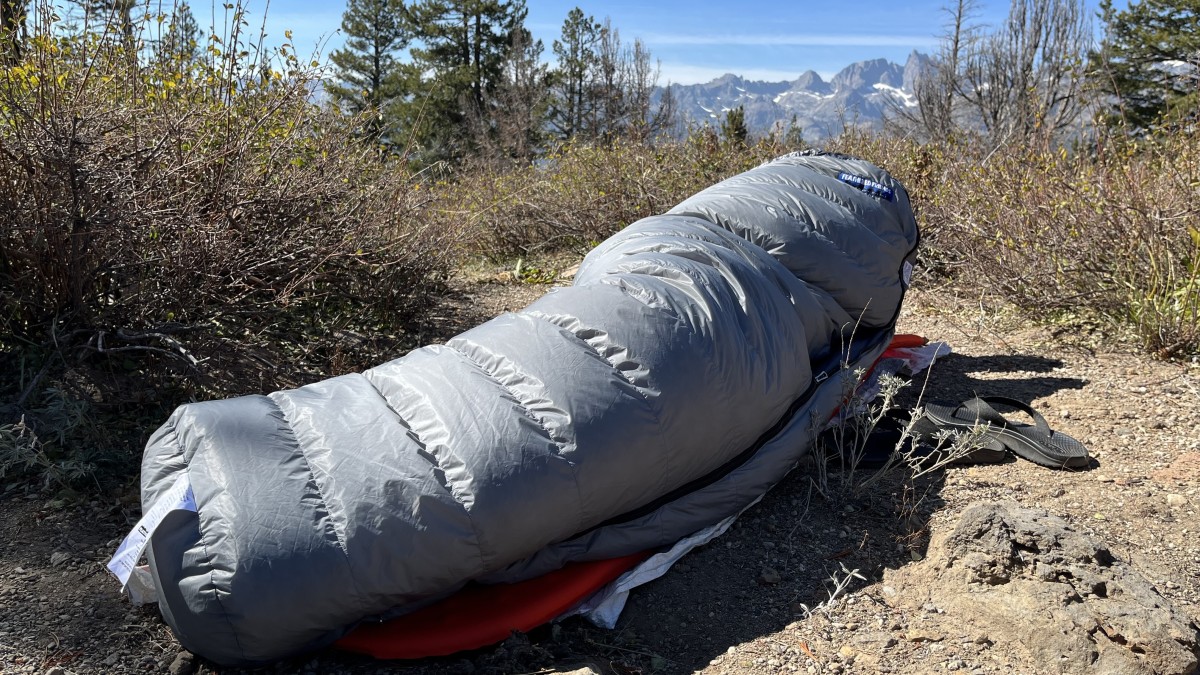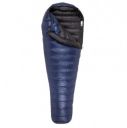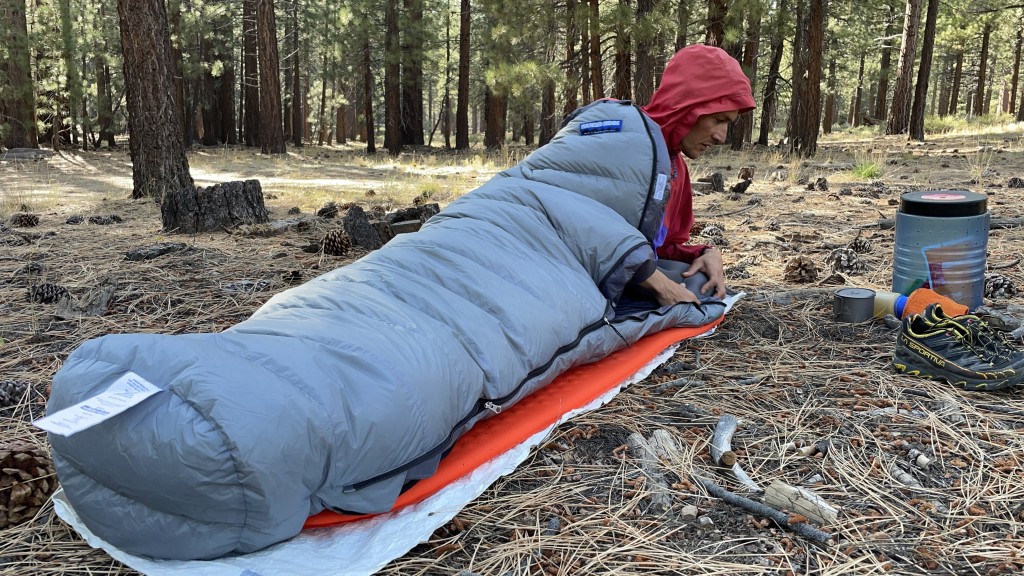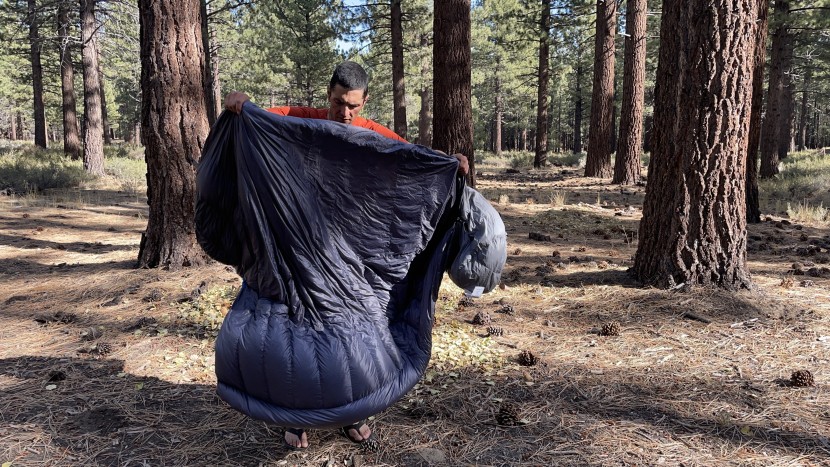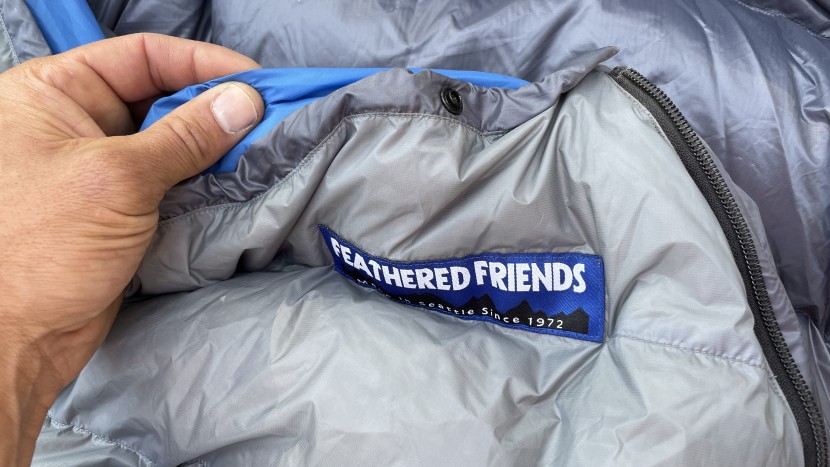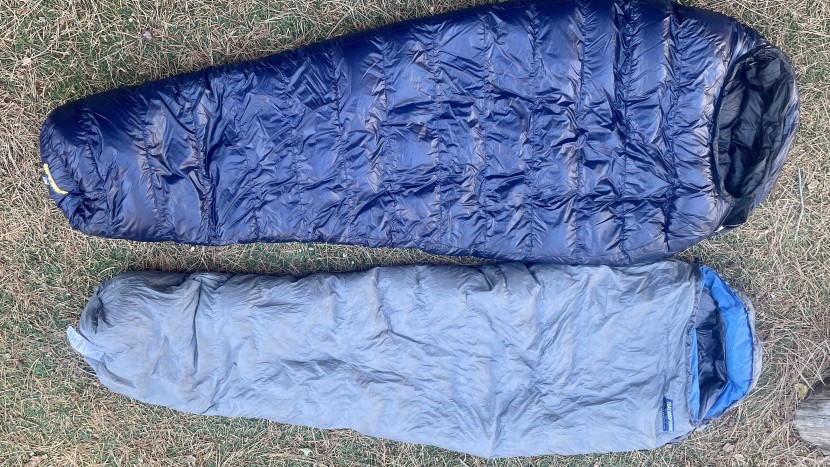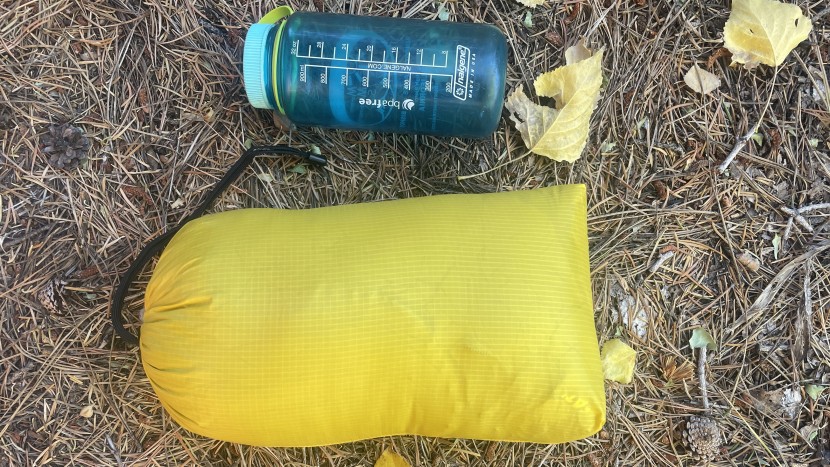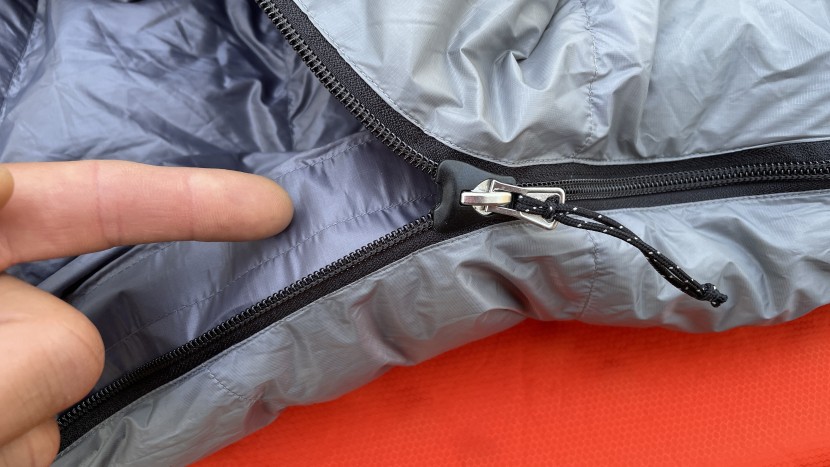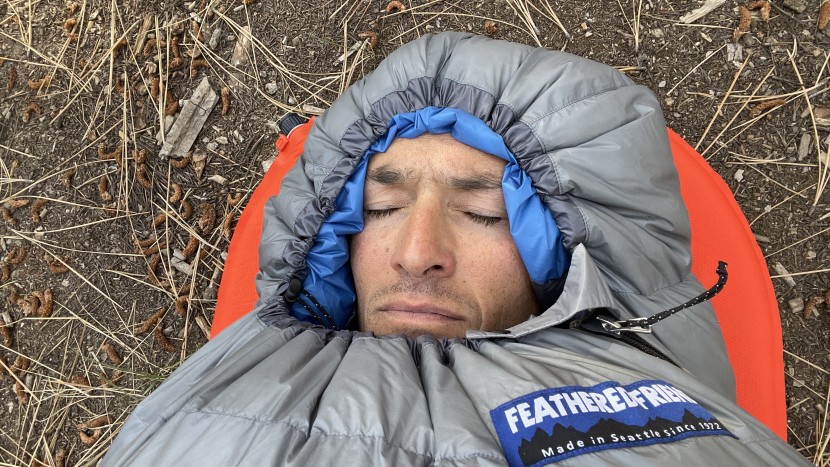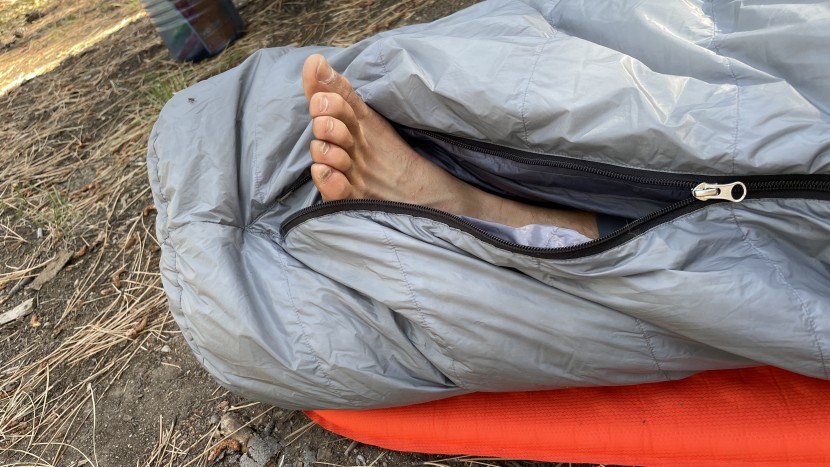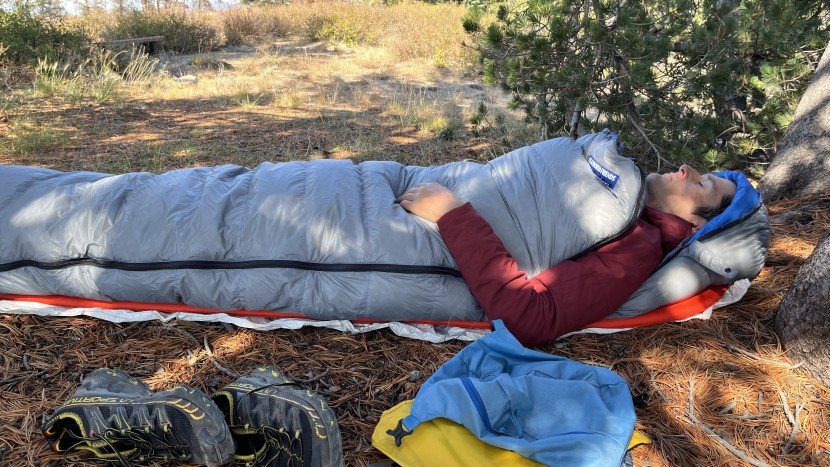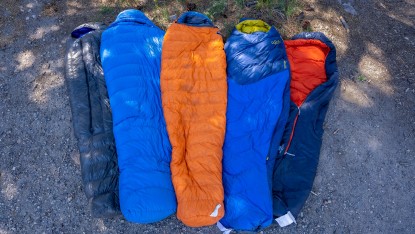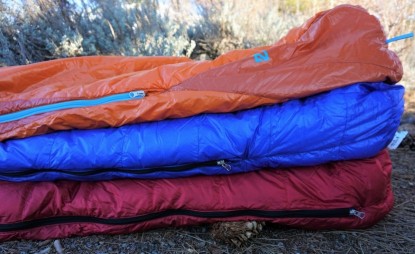Our Verdict
Compare to Similar Products
This Product
Feathered Friends Hummingbird UL 30 | |||||
|---|---|---|---|---|---|
| Awards | Best for Fast and Light Adventures | Best Overall Backpacking Sleeping Bag | Best for Colder 3-Season Conditions | Best Budget Down Sleeping Bag | Best Budget Synthetic Sleeping Bag |
| Price | $549 List $549.00 at Feathered Friends | $580.00 at REI Compare at 3 sellers | $630.00 at Amazon Compare at 2 sellers | $285.00 at REI Compare at 2 sellers | $100 List $99.95 at REI |
Overall Score  |
|||||
| Star Rating | |||||
| Bottom Line | The ideal bag when you need the warmth, but ounces matter too | If we could only have one bag for the rest of our lives, this would be it | The best bag for the coldest shoulder season nights | This inexpensive model has decent warmth for the weight, and features that are well thought out | This bag is comfortable and has decent features - pair this with a bargain price and it's a great deal |
| Rating Categories | Feathered Friends H... | Western Mountaineer... | Western Mountaineer... | Mountain Hardwear B... | REI Co-op Trailmade 20 |
| Warmth (25%) | |||||
| Weight (25%) | |||||
| Comfort (20%) | |||||
| Packed Size (15%) | |||||
| Features (15%) | |||||
| Specifications | Feathered Friends H... | Western Mountaineer... | Western Mountaineer... | Mountain Hardwear B... | REI Co-op Trailmade 20 |
| EN Temp Rating (Lower Limit) | 30°F (not EN rated) | 21°F | 14°F | 15°F | 21°F |
| Insulation | 950+ FP Down | 850+ FP Down | 850+ FP Down | 650 FP Duck Down | Synthetic - recycled polyester |
| Measured Weight | 1.3 lbs | 1.5 lbs | 1.8 lbs | 2.3 lbs | 3.2 lbs |
| Compression/Stuff Sack Weight | 1.0 oz | 1.0 oz | 1.0 oz | 1.9 oz | 1.6 oz |
| Fill Weight | 12.0 oz | 13.0 oz | 17.0 oz | 21.0 oz | 34.9 oz |
| Shell Material | 10D Pertex Endurance | 12D Extremelite | 12D Extremelite | 20D ripstop nylon | Recycled polyester |
| Liner Material | 15D ripstop nylon | 12D nylon taffeta | 12D nylon taffeta | 30D nylon | Polyester |
| Hydrophobic Down? | No | No | No | No | N/A |
| Neck Baffle? | No | No | Yes | Yes | No |
| Small Organization Pocket? | No | No | No | Yes | Yes |
| DWR Treatment? | No | Yes | Yes | No | Yes |
| Zipper Info | Full-length / side | Full-length / side | Full-length / side | Full-length / left | Full-length / left |
| Shoulder Girth | 58 in | 64 in | 59 in | 62 in | 62 in |
| Hip Girth | 52 in | 56 in | 51 in | 53 in | 58 in |
| Foot Girth | 38 in | 39 in | 38 in | Not listed | 40 in |
| Compression or Stuff Sack? | Stuff sack | Stuff sack | Stuff sack | Stuff sack | Stuff sack |
Our Analysis and Test Results
The Hummingbird is almost magical for the warmth and comfort it provides in such a lightweight package. Although it ultimately missed out on the top-most spot, the competition was extremely close, and we love this bag for the right use cases. If you want warm and light and are okay with a slim cut, this is one to seriously consider.
Warmth
The Hummingbird UL contains 12 ounces of ultra-premium, 950+ fill-power, goose down. Although this is a little less insulation than other primo bags with similar temperature ratings, it has a narrower fit that requires less fill to provide the same amount of warmth. In addition, the snug fit means that there's less empty space to heat up with your body, so you feel warmer.
Feathered Friends does not put their sleeping bags through the formal EN temperature testing. Instead, they supply their own manufacturer rating of 30°F for the Hummingingbird . We felt it provided similar warmth compared to the average bag that receives an EN lower limit rating of 20°F. With this level of insulation, it's an excellent middle-of-the-road bag that's well-suited for all but the coldest or warmest 3-season uses.
Weight
Weighing in on our scale at an outrageous 1.3 pounds for a size regular, the Hummingbird UL is truly ultralight. This is made all the more impressive when you consider its substantial insulation and sturdy, full-length zipper that provide significant warmth and versatility.
On paper, there are a few bags with reported weights and temperature ratings that would seem to offer even better warmth-to-weight ratios than the Hummingbird. Our testers, however, found many of the temperature ratings on these competing bags to be overly optimistic. The Hummingbird's insulation, in contrast, felt much warmer than its 30° rating. Thus, we consider this bag to be the top bag in warmth-to-weight ratio and have trouble attributing this outstanding performance to something other than sorcery.
Comfort
Our only significant complaint with this bag is its comfort. Don't get us wrong, the fabric is soft, and the incredible loft of its ultra-premium down creates an extremely cozy cocoon. Rather, our comfort complaint is due to the narrow fit.
With 58 inches of shoulder girth, the Hummingbird is one of the narrowest bags we tested. Virtually all of our testers are happy inside bags that are 64 inches wide, but as the girth shrinks, complaints steadily rise. Our broad-shouldered and side-sleeping reviewers, in particular, found the Hummingbird to be constrictive. This probably isn't a problem for shorter trips, when the benefits of less weight can overshadow the drawbacks in comfort. However, for longer trips or over the full lifetime of a bag, the review team felt that the average user would likely prefer a wider design. That said: skinnier backpackers take note!
A smaller complaint some of our testers had with the Hummingbird is related to the nosiness of its Pertex Endurance shell fabric. When manipulated, this fabric creates a distinct crinkling sound. Although it's only subtly louder than most other bags, some lighter sleepers felt the difference was enough to disturb their sleep. The interior fabric of the bag did not seem crinkly to us.
Packed Size
As its low weight would suggest, this bag packs down pretty small. With the help of an aftermarket compression sack, it achieved an impressive 7 liters in compressed volume. This is slightly larger than some bags with less insulation but nearly identical to any other bag offering a similar level of warmth.
The simple drawstring stuff sack this bag comes with is ultralight, at just 0.8 ounces, but not super effective at compression. To fully enjoy the small packed size of the Hummingbird, you will need to get a third-party compression sack. This will set you back some extra bucks but could shrink the packed size by roughly 20%.
Features
Although it's just a simple mummy bag, we like the features and design of the Hummingbird. The zipper, as we mentioned above, is super long and incorporates an effective anti-snag zipper slide. The fabric adjacent to this zipper is stiffened by an internal strip of flexible plastic that further reduces the likelihood that the fabric will get caught in the zipper's teeth.
This long zipper allows the Hummingbird to vent excess heat as well as any other bag we tried, expanding the range of temperatures it can comfortably be used in. Our testers could open the lower slider to let our feet breathe while keeping the rest of the bag draft-free. When opened fully, the long zipper also effectively turns the bag into a quilt for sharing on a chilly morning or between climbing partners during a “light and fast” bivouac. While we only use the closure flap at the top of a sleeping bag's zipper on the coldest of nights, the snap on this flap held with authority but also detached quickly enough for middle-of-the-night bathroom trips.
We also prefer the hood design on this and other Feathered Friends bags compared to some of their closest rivals. Placing the hood's drawstring slightly back from the hood opening creates a cozy tube of insulation around the face that our testers found to be warmer and more comfortable.
Should You Buy The Feathered Friends Hummingbird UL 30?
The Hummingbird is an excellent sleeping bag with a bit of a fit issue. We think larger users will find it uncomfortable, especially on longer trips. Backpackers who are smaller — like the Hummingbird itself — will find a reasonable level of comfort and benefit from the lower weight that comes with fewer feathers and less fabric.
What Other Backpacking Sleeping Bags Should You Consider?
Readers who like the specs and features of the Hummingbird but want a little more space to stretch out and roll around should check out the Western Mountaineering MegaLite. It's very similar but with 6 more inches of space in the shoulders. If you want the lightest of the light and that's all you care about, consider the Therm-a-Rest Hyperion 32. It's even lighter than the Hummingbird!


